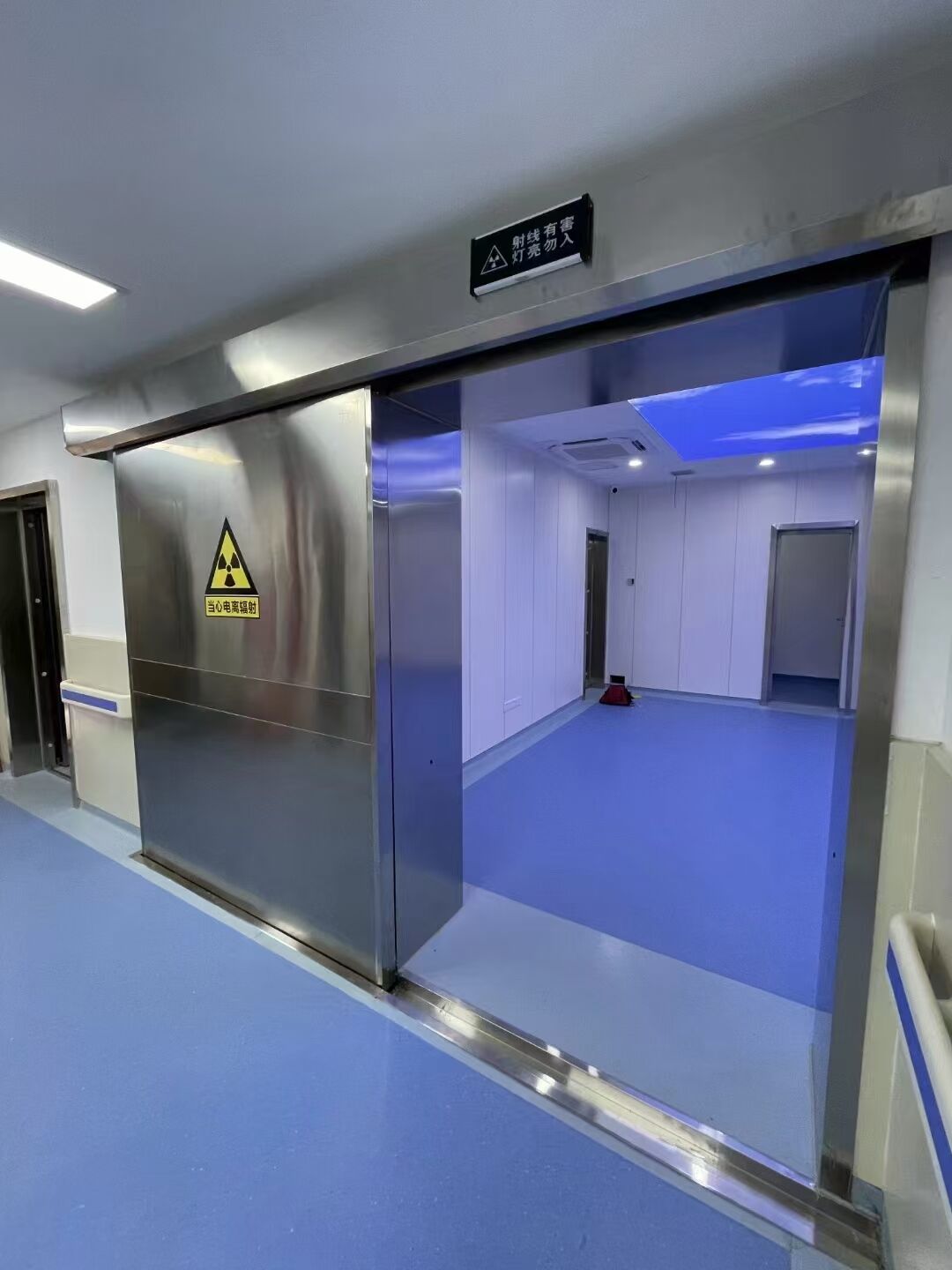Protective Doors in Fire Safety: Ensuring Building Security During Emergencies
Introduction: Role of Protective Doors in Fire Safety
Undoubtedly fires are one of the most damaging forces that a building may encounter refusing to leave behind human life as well as the building itself. In such a situation, a successful and fast evacuation is a must, but the control of the fire is also equally important. This is where protective doors, more precisely fire-repelling doors, serve their purpose. Essentially, fire doors are adapted to resist the fire and stop it from spreading during the specified time, thus providing the option of escape to the people and enabling the damage to property to be kept to a minimum. This article aims to see the linkage of protective doors to the fire safety of the buildings and the necessity of their critical role in emergency cases.
Fire-Resistant Materials: How Protective Doors Are Constructed
Fire-resistant protective doors are not just ordinary doors. They are developed with fireproof materials and built to the strictest safety standards. It is through these materials that the door gets its fire resistance and flame capability for its designated time.
- Normally a fire-rated protective door contains steel or aluminum as the core which guarantees high strength and durability. These materials can easily endure very hot temperatures without causing damage to the door. In addition to this, steel is the most frequently used product for fire doors because of its fire-resistant properties, whereas aluminum is used for the sliding door designs that need to be light in weight, e.g., in kitchens.
- Intumescent Core Materials: The application of intumescent materials in the core of fire-rated doors is spotted as one of the most important discoveries. Unlike ordinary materials, intumescent materials puff up when heated, forming a thermal insulating layer which will not allow the smoke and fire to spread significantly. The greater the thickness of the intumescent core, the more fireproof the door.
- Fire-Rated Glass: There are some protective doors that are designed using fire-rated glass mostly in cases where visibility is very important. The glass, regardless of being fire-rated, is treated so that it would not break apart due to fire and heat. The fire-rated glass provides proper illumination without compromising safety from the fire and smoke.
- Seals and Gaskets: Fire protecting doors are also bundled with fire-resistant seals and gaskets on the perimeter. These seals expand during a fire to fill gaps and prevent the passage of smoke and flames, further improving the door’s effectiveness in a fire situation.
Fire Doors vs. Regular Doors: What Sets Them Apart?
Although fire-rated doors may look similar to non-fire-rated doors, their design, materials, and application distinguish them from one another. The purpose of a regular door is, in most cases, only to provide privacy or accessibility, and no attention is paid to its fire-reducing capabilities. It is, however, a primary function of a fire protective door to confine the fire and protect the structure from further damage. Here are the significant differences:
- Fire Resistance: The lack of fire resistance is the most apparent contrast between the two types of doors. If a regular door is used for living purposes, it can be easily flamed and can cause no fire resistance at all. In contrast, fire doors have been tested and rated to endure a certain time of fire- under national standards – typically 30, 60, or 90 minutes or more, depending on building codes and requirements.
- Material Composition: The average doors are generally made of light materials such as wood and hollow-core panels which are easily consumable by fire. On the other hand, fire-rated doors make use of steel, composite materials, and intumescent cores to ensure the door remains structurally sound and is not affected by the heat.
- Sealing Mechanisms: Around the sides of fire-rated doors, there are special seals that inflate during a fire to prevent the transfer of smoke and flames. Ordinary doors do not have these special fire seals and thus, do not meet the requirements of fire protection
- Regulatory Compliance: According to fire regulations, fire-rated doors are prohibited from use and they do not meet the demands of authorities such as the National Fire Protection Association (NFPA) or Underwriters Laboratories (UL). Therefore, only fire-rated doors can be said necessary for the assurance of building safety in fire.
Benefits of Fireproof Doors in Emergency Egress
Still, the most important task in the case of a fire is to prevent the unexpected spread of the flames and smoke while giving the chance to people for safe evacuation. In the accomplishment of such a goal, fire-rated doors are of high help. Here is how:
- Safe Egress: Corridors, stairwells, and exit routes are the places where fire-rated doors are most commonly used to provide protection for the escape route during a fire. These doors play a part in dividing the building into compartments, which, by reducing the spread of smoke and flames, give people more time to get out. This is indispensable in high-rise buildings or large facilities where the evacuation time of people is longer, a skyscraper for instance.
- Fire Containment: The main function of fire-rated doors is to prevent fire from moving through the building by sealing off the area which is already aflame. More precisely, fire doors serve to stop the fire from spreading to the surroundings, supporting the fire's natural burning without endangering the other floors or rooms (if any).
- Fulfillment of Safety Standards: If you install fire-resistant doors, you take a sure way to be on good terms with the local fire safety codes. Designers of these codes always remember that they are designed to save human lives and reduce injuries caused by fire, and they always need fire-rated doors in certain places, such as near lifts or stairs.
Fire-Rated Door's Maintenance And Inspection
Regular inspection and maintenance are mandatory requirements if you intend to see fire-rated doors operating as they are supposed to. Fire doors are normally exposed to damage by natural forces and man-made activities like daily use which can accelerate wear and tear and consequently make them inefficient in the course of a fire outbreak. Suchlike maintenance practices as follow:
- Periodic Inspection of Doors: At least once, if not twice, a year, fire doors should be glanced over carefully to make sure there are no visible signs of damage or decay. Not letting smokes, requires that the link is still good, and the door has to be in the correct position.
- Test the Functionality: Make sure the door operates properly and that the closing mechanism is in good working order. Fire doors should be able to close automatically. In case anyone were to hold the door open, the door should latch properly when it is shut.
- Seal Integrity: Fire resistant seals along the edges of the door should be inspected for cracks or wear signals. Only if the seals are torn, it is mandatory to change them and can maintain the door's fire resistance.
- Compliance with Regulations: It is absolutely necessary to ensure that fire doors keep up with the local building and fire safety codes. In case of non-compliance, you may be fined or the safety of the residents may be compromised when the need for protection occurs.
Conclusion: Proper Doors Are the Foundation of Fire Safety in Buildings
Fire safety is crucial in every building, and making sure that fire-resistant doors are in place is one of the most important safety measures in case of an emergency. The purpose of these doors is not only to endure the flames but also to serve as a way of saving lives by stopping the rapid spread of fire and smoke. Fire-rated doors, constructed from high-quality materials, secure the safe exit of the people and prevent the fire from engulfing the whole area to some extent, thus, being one of the main requirements in the field of security particularly in case of high-security buildings, hospitals, schools, and similar public places. The regular maintenance and adherence to fire safety codes guarantee the efficiency of the fire doors, and consequently, all the tenants and building owners can live without any worry, along with offering controlled fire safety measures, i.e., the latest technology insulates people so that they are safe during emergencies. As fire safety requirements change, the protective door design and materials used to keep people safe in emergencies must adapt as well.

